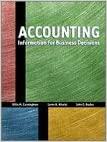Nike disclosed the following in its 1998 annual report (in millions): www.nike.com Inventory valuation: Inventories are stated
Question:
Nike disclosed the following in its 1998 annual report (in millions): www.nike.com Inventory valuation: Inventories are stated at the lower of cost or market. Cost is determined using the last-in, first-out (LIFO) method for substantially all U.S. inventories. Non-U.S. inventories are valued on a first-in, first-out (FIFO)
basis.
May 31 1998 1997 Finished goods $1,303.8 $1,248.4 Work-in-process 34.7 50.2 Raw materials 58.1 40.0 $1,396.6 $1,338.6 The excess of replacement cost over LIFO cost was $21.9 million and $20.7 million at May 31, 1998 and May 31, 1997, respectively.
The company also disclosed that its costs of sales were $6,065.5 and $5,503.0 in 1998 and 1997 respectively.
www.reebok.com Reebok disclosed the following in its 1997 annual report:
Inventory valuation: Inventory, substantially all finished goods, is recorded at the lower of cost (first-in, first-out method) or market.
Required: (1) Why do you think that Nike and Reebok use different cost flow assumptions?
(2) Why do you think that Nike uses a different method for its international inventories than it uses in the United States?
(3) Explain why a user might want to convert Nike’s inventory and cost of goods sold to non-LIFO amounts.
(4) Compute the amounts of Nike’s beginning and ending inventories for 1998 and its 1998 cost of goods sold under a non-LIFO method.
(5) Compute Nike’s inventory turnover ratio for 1998 using
(a) the LIFO amounts and
(b) the non-LIFO amounts.
(6) What is the cumulative effect at May 31, 1998 on Nike’s cost of goods sold from using LIFO?
TYK-1
Step by Step Answer:

Accounting Information For Business Decisions
ISBN: 9780030224294
1st Edition
Authors: Billie Cunningham, Loren A. Nikolai, John Bazley





